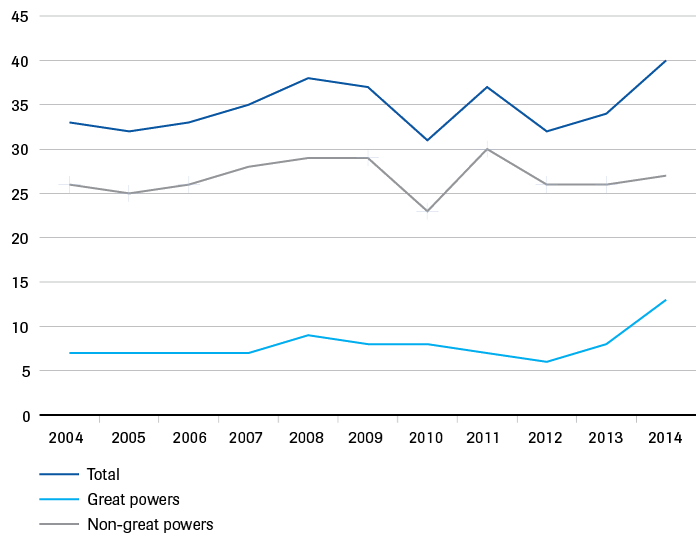The Clingendael Strategic Monitor seeks to take a look at developments in the near future which are of strategic importance to the Netherlands. Obviously, it does so only within the bounds of what is possible, because individual events and incidents are usually unforeseen; developments are less so, but even so it is a fortunate researcher indeed who discovers a pattern of consistency and continuity in such developments that makes it possible to refer to ‘trends’. Despite this, what trends are there with regard to Europe’s territorial integrity? What threats can be expected with any degree of certainty in the next five years? And how is the international order evolving? Understanding the context is a prerequisite for conducting foreign policy, and the ability to anticipate surprises and events (especially unpleasant ones) is the ultimate policy rationale for analysis and monitoring, ideally even managing and engineering favourable developments. We therefore start with a (European) threat assessment based on a number of key trends. Part 2 of this contribution describes how the international order is developing with regard to this theme – one that may be decisive.
Threat assessment
Introduction
In its recent Global Strategy, the European Union (EU) uses a broad definition of security. The Global Strategy covers a spectrum that spans the dangers of terrorism, hybrid threats, economic shocks, climate change and energy security: ‘Our Union has enabled citizens to enjoy unprecedented security, democracy and prosperity. Yet today terrorism, hybrid threats, economic volatility, climate change and energy insecurity endanger our people and territory. An appropriate level of ambition and strategic autonomy is important for Europe’s ability to promote peace and security within and beyond its borders. We will therefore enhance our efforts on defence, cyber, counterterrorism, energy and strategic communications. Member states must translate their commitments to mutual assistance and solidarity enshrined in the Treaties into action. The EU will step up its contribution to Europe’s collective security, working closely with its partners, beginning with NATO.’[1] With this broad security concept in mind, as discussed in other contributions in this Monitor, this contribution examines the component of territorial integrity and the question of what threats may be expected in the near future.
A snapshot of European security has less significance unless it is also placed in a medium-term perspective. On paper, Europe – for the sake of convenience mainly regarded here as the group of countries which constitute a security community through their membership of the EU and/or the North Atlantic Treaty Organisation (NATO) – is a major player on the world stage, and one, moreover, that is allied with the military capability of the United States (US) and Canada (see Figure A in the pop-out window). The territorial security of Europe (narrowly defined here as the EU) should therefore primarily be seen in this context.
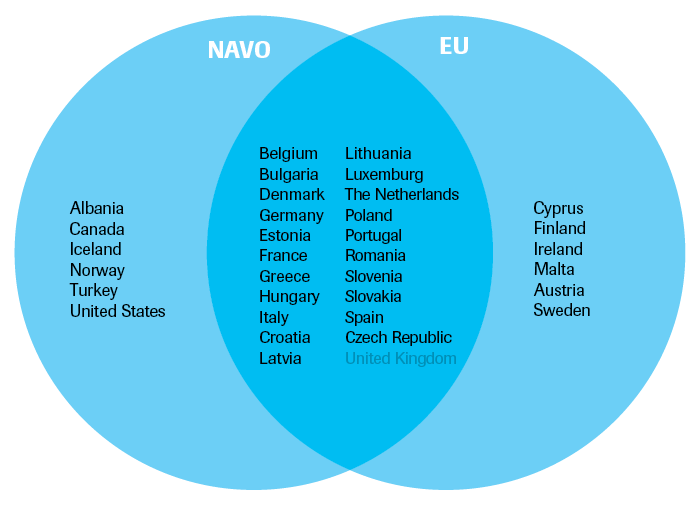
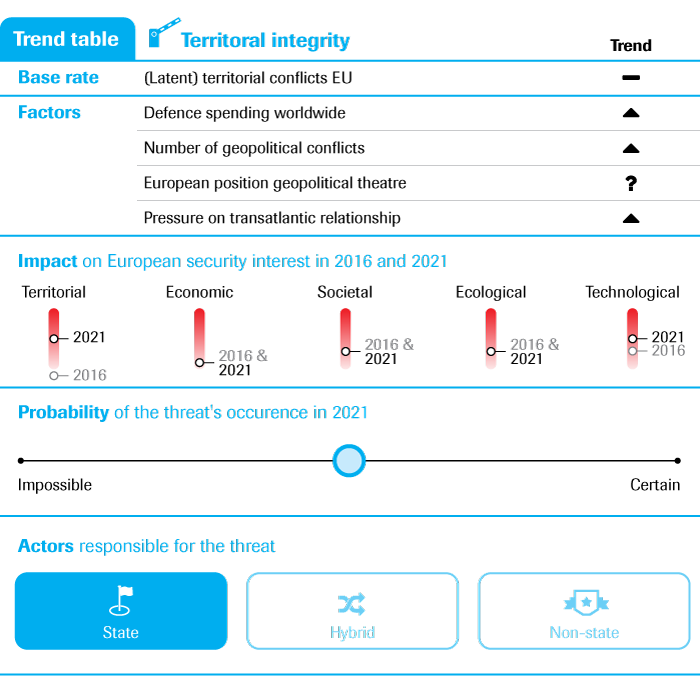
Base rate
A natural starting point for analysis is provided by a tally of violations of European security in recent history. In general, the world is becoming multi-polar, so it is assumed that tensions, and hence conflicts, will increase. From a European perspective, the most conspicuous events are the annexation of the Crimea (2014) and the conflict in South Ossetia and Abkhazia (2008), in which Russia demonstrated its willingness to act assertively. As a result of such incidents, the rather bleak snapshot of 2016 is mostly qualitative in nature and influenced by perceptions. It is therefore sensible to situate such information within a somewhat longer-term development, based on quantitative data.
Figures from two Swedish institutes, the Stockholm International Peace Research Institute (SIPRI) and the Uppsala Conflict Data Program (UCDP), conclude that there was little change in the broad pattern of conflict around the world between 2005 and 2015.[2] The UCDP distinguishes three types of conflict: conflicts in which states are involved, conflicts between non-state actors and unilateral violence against civilians. Overall, the number of ‘violent incidents’ (involving at least 25 deaths per year) in all types of conflict was the same at these two measurement points, as was the number of state-based conflicts.[3] In line with qualitative perceptions, there has been an upward development in the use of force over the last two years, however. There have been slight interim fluctuations and a clear shift from unilateral violence (which has halved) towards multilateral intra-state conflict. Europe (defined as the EU) constitutes a relatively very secure and stable zone across the board: in statistical terms, there has been very little change here. Over the years there have invariably been just one or two instances in the category of state-based conflicts, with Europe thus being the most peaceful region in the world. By comparison, the most conflict-prone regions are Asia and Africa, with an average of 14 and 12 conflicts a year respectively. Account must also be taken of whether the conflicts remained the same during this time span, or whether there was a succession of different conflicts. By this measure too, Europe is the most peaceful region in the world (along with the American continent, with 5.5% of all conflicts in each case). By comparison, Asia/Oceania and Africa share the title of ‘most conflict-prone region’ by this measure: each had 39% (n=74) of the conflicts. SIPRI summarises the picture as follows: ‘(S)ome areas, such as Western Europe, North America, East Asia and Oceania, witnessed little or no violence (..…) while the Middle East, many parts of Africa and South Asia encountered all three types of (..) violence.’[4] See Figures 1, 2 and B.
The data of the Heidelberg Conflict Barometer reflect this conclusion. Heidelberg collects information about non-violent as well as violent conflicts.[7] For the period 2014-15, Heidelberg observes that the number of violent conflicts in 2015 rose from 11 to 16, but still only represented a quarter of the regional total of all (violent and non-violent) conflicts (n=62). Europe is thus the only continent where non-violent conflicts outnumber violent ones. The EU in turn is a peaceful region within Europe. Most conflicts (13 out of 16) ‘were located in Ukraine, South Caucasus, and Western Balkan states’.[8] What is the conclusion from all this? The wind chill associated with the concept of multi-polarisation (i.e. increasing rivalry and more tensions and conflicts) is not immediately apparent from the figures. However, figures are numerical and flat, and take no account of how ‘deep’ or dominant a given conflict may be: there is a certain hierarchy where conflicts are concerned. The number of potential, slow-burning conflicts is, given the ever more strident rhetoric and the virtual breakdown of conflict-regulation arrangements, significantly higher than 10 or 20 years ago, or even than before 1989. The probability of truly violent European conflicts is increasing, but in light of current events (the election of Trump, the Trump-Putin relationship, NATO’s priorities, especially the Article 5 guarantee) is unpredictable.
Determining factors
A further issue is the appropriateness of a trend forecast until at least 2021. Focusing on Europe, there are several factors here that make it impossible to justify a simple extrapolation of the base rate. In international relations theory, the environment is traditionally analysed on several levels: global, European and national. This three-way division captures the balance between being a player and being at stake: it can be expected that the higher the level, the more influential the developments there are for players, but also the more modest the role that a small country can play. At least four factors can be named that are influential (see Table 1) – two global/regional and two (internal) European – each of which is followed by a brief discussion.
To start with, European territorial security is sensitive to the (global) defence efforts of other large countries. Two metrics are important: size of budgets and relative changes. Figure 3 provides an insight into the relative changes between the major players. Since 2009, Russia and China have each spent about 50% more on defence, while the US has spent over 20% less. Europe has spent approximately 5% less, although an upturn in spending seems to have started in 2014. The European and US shares in overall spending has thus decreased, while those of China and Russia have increased. The fall in defence spending in Europe is mainly due to the financial crisis, precarious public finances and the reduced threat perception at the end of the Cold War. As expected, the weak economy, partly due to the fall in oil prices, has also put direct pressure on the Russian defence budget, causing it to increase less than planned. The political will of former President Obama to disengage from the wars in the Middle East and Afghanistan, as well as budgetary constraints, account for the fall in US defence spending. It can be concluded that defence budgets generally respond more quickly to available macroeconomic opportunities or to constraints unrelated to security policy (e.g. sequestration) than to changing security perceptions, leaving aside for the moment the question as to whether defence resources are allocated appropriately.
The absolute amount of defence budgets is also important (see Figure C). With nearly 20% of world spending on defence (North America nearly 40%, China 8%, Russia 5%), Europe takes second place, and the combined total (around $280 billion) seems impressive enough to measure up militarily against the ‘surrounding regions’ such as Russia/Eurasia ($80+ billion, 5% world), MENA ($200 billion, 13%) and China ($130 billion, 8%).[10] But these input data are also relative, because they say little about Europe’s output (in terms of salience or effectiveness) in world affairs. It has been accepted for years that in Europe there is a lack of cooperation and task division in the field of research, purchasing, maintenance and operational deployment of resources, and the cumulative deployment of defence funding is for that reason alone a distorted response to actual ‘European security needs’.[11] The collective conclusion is that although there has been a slight downward (!) trend in global defence spending, increases are visible at the regional level outside Europe (especially in China, but also more generally in Asia and the Middle East and North Africa (MENA)). In addition, increases have been forecast (US, Europe) and confidently planned but squeezed for political and economic reasons (Russia). Political considerations are expected to (re-)gain importance (relative to macro-economic developments). This shift will lead in 2021 to a competitive increase in defence spending – including in Europe.
A second (global) factor relates to the nature and location of conflicts. To take the nature of conflicts first, one of the consequences of a world that is becoming multipolar is that a shift should be apparent towards order- or power-related conflicts, particularly over land and natural resources. Of the conflicts recorded by the Heidelberg Barometer mentioned earlier, three can be classified as ‘geopolitical conflicts’, i.e. conflicts over spheres of influence, territorial disputes or conflicts over natural resources (see Figures D and 4). Numerically, the geopolitical dimension does not appear to have changed significantly (43% of conflicts), including in Europe, although it is at a slightly higher level there (45%). The great powers’ share in all conflicts, another indicator of geopoliticisation, is rising slightly (in Heidelberg, 35% [26 of the 74 conflicts], see Figures D, E and 4); the prognosis, however, is that geopolitics is (or at any rate, will be) back. There are three primarily qualitative indicators of this.
To start with, there is the obvious preference of the new US administration for adopting a more confrontational attitude in international relations, in which ‘America First’ pushes out America’s role as ‘system administrator’ (The Art of the Deal). Second, there is the expected competitive redistribution of spheres of influence, in which overreactions, bluffs and escalation may become pathological side-effects of increased rivalry. Finally, there is the location of current conflicts (conflict on the Eastern and Southern Borders) which threaten Europe’s territorial integrity (see Figures 1 and 2). The MENA region is close to Europe and in relative terms – though not in absolute terms – it is the most violent conflict region: 10 out of 43 wars, a quarter of all global conflict, are taking place there. When one focuses on serious violence, the real wars, the picture becomes even more negative: 6 out of 19 major wars – one-third – are being waged in the MENA region. The outlook is poor: this factor will become stronger, and in both absolute and relative terms (Europe relative to MENA) there is likely to be an intensification of violence in current and future conflicts in the period to 2021.
A third factor is the European response to the debate on the emergence of China, a more assertive Russia and a (possibly) more isolationist United States. In this debate, it is argued that the inevitable decline of the old Western world order and Europe’s loss of importance in the global economy and as a global value generator, in demographic terms, and the resultant decrease in power, can only be countered by a strong and united, ‘relaunched’ Europe.[13] There are two competing responses here. The optimistic view is that Brexit and possible American isolationism [14] will compel a smaller but resilient EU to pull itself up by its own bootlaces and become a smaller but more unified player in world politics. The starting point here would be to increase European defence efforts, within the possibilities offered by the Treaty on European Union (TEU).[15] In a more negative scenario, a pessimistic, anti-European mood gains traction, rejecting any relaunch and seeking salvation in the creative destruction of ‘Brussels’. In this scenario, Europe is preoccupied with a struggle with itself and is temporarily put out of action as a global (f)actor. The prognosis is that – all other things being equal – it is highly doubtful whether the EU can and wants to reverse the adverse trend. The ‘Trump’ factor and the (now) likely hard Brexit negotiations justify ‘relaunchism’ in the EU. The Global Strategy can be read as a (verbal) blueprint for such a relaunch, based on raison de système rather than raison d’état(s). Equally, though, it may turn out that ‘all other things’ are not ‘equal’: protectionism, populism and rampant conservative nationalism as a result could in fact lead to the dissolution of Europe, or at least of its unity. If that happens, Europe will no longer compete in the Champions League of global politics: rather, it will be a desperate giant stumbling around with feet of clay.
The fourth and final factor concerns the development of the transatlantic relationship. An alternative to the potential relaunch scenario outlined above is a strong partnership between Europe and the US, possibly supplemented with like-minded partners, which would be strong enough economically and militarily at the global level to avert threats, make its voice heard in decision-making bodies and project not just hard but also soft power. Measured by the yardstick of economic power (see Table 2), it is clear that only a stable transatlantic ‘through thick and thin’ partnership can lay claim to world leadership. As a combination it would be a strong player; however, the figures tell a tough but undeniable story: the EU-US partnership is losing ground in the world. Consequently, even together the US and Europe will not be able to dodge the representativeness question of the ‘Rest of the West’: the combined share of the US and Europe (which not long ago was more than 50%) in global GDP in 2015 was just 30% according to the International Monetary Fund (IMF), and will drop to 28% by 2020. China’s share in the same period will have increased from 17 to 19%. What, then, is the prognosis? Transatlantic cohesion is currently threatened by a twofold crisis. There is the intractable, not to say hopeless, deadlock on the Transatlantic Trade and Investment Partnership (TTIP); and militarily, there is the ongoing US displeasure that Europe’s proportion of spending on (NATO) defence is far too low. This difference may have shrunk by 2020 if all NATO nations make good on their defence spending pledge, made in 2014, of 2% of GDP. Although this situation has been addressed somewhat (and American spending has fallen), the gap may be smaller in 2020, but there will not be a 50-50 division. In other words, a transatlantic partnership will still have many difficulties to overcome. The outcome of the US presidential election, which came as a surprise to many, certainly has not improved its chances of success.
|
GDP ppp bn $ 2015 |
rank |
GDP ppp bn $ 2020 |
rank |
|
|---|---|---|---|---|
|
China |
17,2% |
1 |
19,4% |
1 |
|
US |
15,9% |
2 |
14,9% |
2 |
|
EU-top 10 |
14,2% |
3 |
13,0% |
3 |
|
India |
7,1% |
4 |
8,5% |
4 |
|
Russia |
3,1% |
5 |
2,7% |
5 |
Impact and shocks
The return of geopolitics has not yet led to more conflicts, but there is cause for concern. The transatlantic axis has been weakened by the interaction between a reinterpretation of American and other interests, perceived responsibilities and a less effective Europe. The question is how likely it is that these trends continue. In this future analysis, after all, a paradoxical attempt is made to take account of ‘unknown unknowns’ – unimagined events that would drastically affect or even reverse a trend. The predictability of such discontinuities is always open to dispute. The Clingendael Expert Survey attempts this feat by looking at what a select group of leading experts thinks about the occurrence of unexpected events and their possible consequences (Figure F shows these ‘shocks’ in graphic form). The results make it abundantly clear that trend analyses of violations of territorial integrity are very fluid: all seven shocks score high on impact and low on probability. At the same time the observed trend seems to be robust, even if the shocks actually occur: whether it is an attack on the Baltic states or a more isolationist US stance, both point to a growing risk of violations of Europe’s territorial integrity.
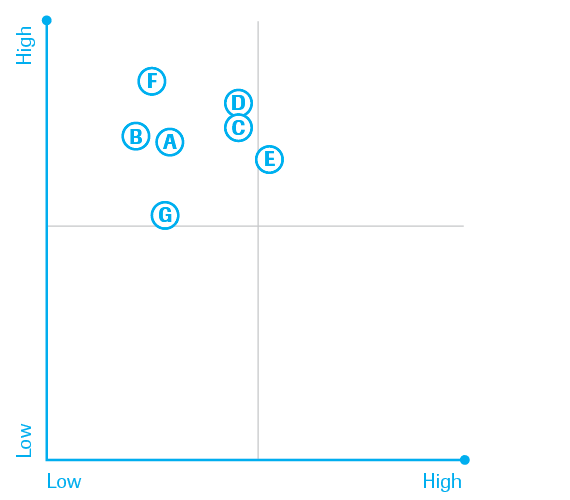
Shock
The regime on territorial integrity
The mainstream analysis of international politics still assumes a global system that is organised into states whose relations are more or less normatively and institutionally organised in (mostly) intergovernmental organisations and regimes. The goal of this order is to promote peace (or at least stability) and prosperity. There is a lot to say about the resources and obstacles, or about standards of progress or regression, in the workings of this system. Failed states, sectional interests that variously compete with or support the status quo, more or less autonomous players, the vague notion of an ‘international community’ and even system-deniers all influence (or to put it less neutrally, either reinforce or disrupt) the ideal situation of a stable and universally functioning world order. What can be expected over the next five years? In which direction is the regime developing as regards the use of force? The following analysis will briefly discuss the key actors and institutions, developments in the area of norms and rules and the degree of compliance with these norms and rules. The conclusion is short and simple: the state of this particular international regime is shaky. The building blocks, ordering principles and characteristics, norms and behavioural rules, institutions and results are open to discussion.
Actors and institutions
In 2016, the old, heuristic picture of the ‘international system’ seems to be wearing thin: the state, as the system’s inevitable Lego brick, may be back after a period of challenge by globalisation, yet it is also under pressure. This pressure is caused by mounting disagreements over sovereignty, over the right to self-determination versus the privileges of transnational spheres of influence, over responsibilities that go beyond the national interest, and over the simple fact that non-state actors have so many overlapping, unique or competing opportunities to exert influence compared with state actors. This Westphalian international organisational principle is experiencing limited competition from (a) radical theocratic conceptions of organisations such as Islamic State (IS); and (b) a competitive state model in which ‘the international community’ is denied or explicitly takes second place (every man for himself, ‘America First’).
What do this return to state power and de facto power struggle with non-state actors say about the global institutional situation? To begin with, there is great pressure on the UN Security Council (UNSC). Within the UNSC, a harsher tone is being taken with regard to a number of long-running discussions on sovereignty (Responsibility to Protect (R2P) versus non-interference, a great power’s ‘right to’ a sphere of influence versus the ‘right to self-determination’). In absolute figures, the use of the veto power is increasing slightly, and it is striking that particularly China and Russia are using this tool (see Figure G). But the problem is far more complex. Resolutions which are doomed to be vetoed are preferably not put to the vote, but it seems that greater use is being made of the threat of a veto in the informal diplomatic game. A French/Mexican proposal has been circulating since 2014 to restrict the crippling use of the veto (e.g. with respect to genocide resolutions). In short, there has been a decline in the status of the UNSC as a platform for cooperative security. One possible alternative is the G20, which has definitely gained in status and is sometimes even seen as a ‘world government’. However, the effectiveness of the G20 remains questionable. The status of the G7/8 as a credible core group has suffered as a result of the boycott of Russia.
Norms and rules
There is an intuitive difference between norms and rules. An example is the R2P debate and the universality of human rights: there is widespread agreement on the norm, but not on its application. However, the reality is sometimes surprising and pragmatic (and vice versa): parties may fundamentally disagree on the norms, but in order to prevent accidents will sometimes agree on rules of behaviour (e.g. arms control or conflict resolution during armed conflicts). In these cases the quadrant chart refers to ‘negative norms’ and such a situation goes on the left (non-cooperative) side of the chart. Table 3 gives an overview of the most important norms and rules regarding the use of force (which are sometimes broader than this narrowly defined field). Even where the norms themselves seem ‘uninspiring’, for years they have proved a practical and helpful tool for avoiding accidents.
|
Norms |
Rules |
|---|---|
|
The international community recognises and shares universal values. |
Cooperation rule: where win-win can be achieved, cooperation is the norm and the rule (the ‘relative gains’ proviso). |
|
Non-violent conflict resolution is preferable to violent conflict resolution. |
Conflict settlement where possible, without loss of face. |
|
A ‘fair share’ rule also applies: the winner in a conflict does not ‘take all’; the interests of other players and even of the losers are also taken into account. |
Force majeure rule: departures from the cooperation rule, espionage and ‘innovative exploitation’ (using hybrid tactics, artificial islands popping up in the South China Sea, hedging and hacking and even cheating are allowed, provided they are in the vital national interest or in the interest of ‘international stability’). |
The prognosis for 2021 is that all norms (and some rules) will come under pressure. The international community as a community of values is at a crossroads at which two possible alternatives present themselves: (a) the world consists solely of competitive states; (b) there is not one but several parallel international communities (see synthesis chapter). What is more certain is the pressure on the principle of non-violent conflict resolution: the trend here seems to be that the use of force or annexation may be accepted if ‘the people demand it’ (cf. the Putin Doctrine). Moreover, the ‘fair share’ principle is now negotiable, possibly with retroactive effect (cf. the Russian critique of NATO enlargement in the 1990s). The rules regarding conflict resolution and force majeure will probably remain in place.[17]
Compliance
As stated, the general rule is that cooperation occurs where win-win is achievable. This makes sense, because if the proceeds of cooperation are fairly distributed, it is in everyone’s interest – even that of adversaries. However, compliance with cooperation structures is crucial, yet comes under pressure during times of rivalry and multi-polarisation. ‘Verification, not trust’ was the explicit mantra on the closing of the nuclear deal with Iran in 2015. But even ‘verification’ is not guaranteed when ‘secrecy’ can offer unilateral advantages. As expected, compliance as regards the international community as a community of values is therefore low and can be characterised as ‘negative cooperation’. Compliance has probably always been a relatively weak point in international politics, but has been made more visible by modern media, NGO alerts and provocative actions by groups that do not recognise humanitarian law, such as IS and Boko Haram. The same also goes for the legitimacy of enforcement mechanisms: there is a visible inability to respond to insidious crime-related security issues at the local level, such as sexual violence in conflicts, child abuse, the safety of the civilian population and the protection of cultural assets. There have also been fresh failures such as the inability to respond to central security issues such as nuclear proliferation in North Korea since 2006, Crimea/Donbas (2014), the ending of the war in Syria (2013- ...), Sudan (2010 -...), and the flaunted barbarism of IS (2013- ...). In addition, there is the growing uncertainty regarding proliferation regime(s) as a result of Russia’s behaviour, the campaign rhetoric of Trump and the unilateral breach of the principle of inviolability of borders (Vienna 1990) with the Crimean Crises. In short, compliance with some principles was already conspicuous by its absence, but the trend is unmistakably going towards further deterioration.
The quadrant chart and shocks
The general conclusion is that there seems to be a trend towards a neo-multipolar (competitive) order; a further shift can be expected between 2016 and 2021 from conflict over rules to conflict over norms (see Figure 5 for a representation of the international regime). The ‘neo’ is emphasised, because of the new role of non-state actors in many regimes and continuing cooperation in other areas (see the synthesis chapter, which refers to a multi-order).
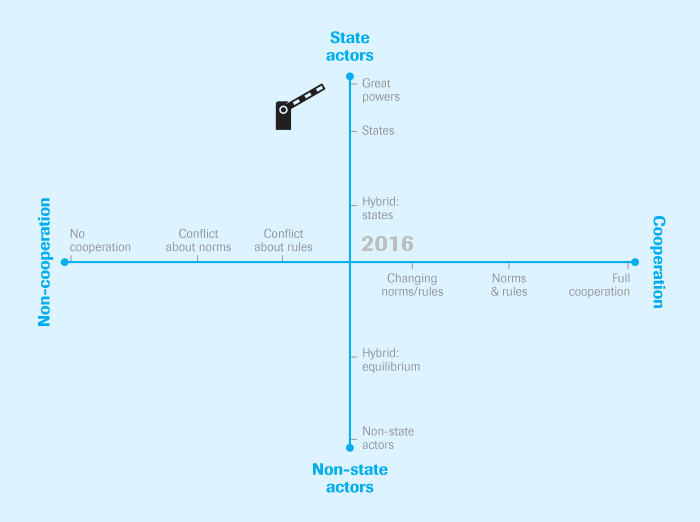
Where shocks are concerned, it may be more realistic to speak in terms of ‘repressed knowns’: feared events that are knowable, but that are so drastic that we park them on the periphery of our analysis. The annexation of the Crimea in 2014 may not have come as a surprise to die-hard Russia experts, but the consequences (a chill in relations with Russia, Russian revanchism, sanctions, etc.) have definitely had a shock effect in Europe. The same goes for the Brexit referendum in June 2016, of which the consequences are literally unprecedented. A paradox may perhaps be put forward as a provisional conclusion: the unexpected shocks in the international order have set the trend in recent years more than the overall statistical patterns, which as we have seen above are fairly stable. In other words, the functioning of the security mechanisms (military, diplomatic and bureaucratic) has proved robust, while politics has been surprised by shocks to an extent that could almost be described as a trend. Although any prediction for the period 2016-2021 is hazardous, such a shock effect is imaginable in the form of a split in the Eurozone (north-south) following a return of the euro crisis, new exit referendums in eurosceptic member states, the disintegration of NATO as a result of a mounting conflict between the US and Europe on burden-sharing and/or the scope of the protection guarantee, or a huge disaster in terrorism or the cyber domain. All of these are shocks with low probability but high impact (see Figure H).
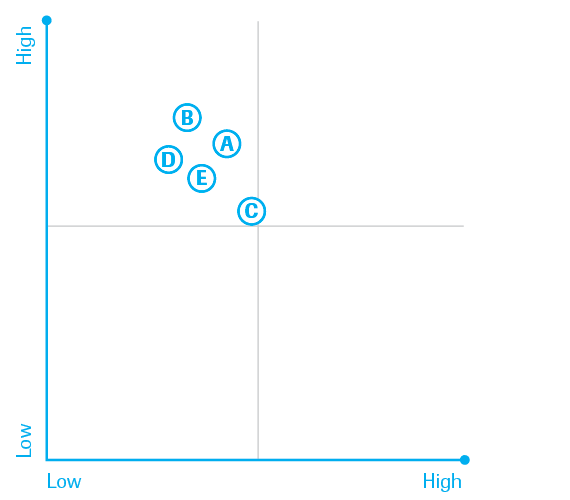
Shock
Conclusion
The security of Europe is a complex mix of current and potential (future) threats, both real and perceived. These are four aspects which make it hard to analyse: policy-makers should at least focus on current and real threats; a more ambitious policy would also address all future threats, both real and perceived. An inventory of such threats up to 2021 is hard to compile and depends on many factors (more than the ones mentioned above).
Moreover, the concept of security/insecurity is a growing monster. At one time it referred to possible confrontation between nations, but despite the claim that ‘geopolitics is back’, the inter-state dimension is insufficient for surveying, identifying and properly predicting the entire spectrum of threats and disruption (intra- and trans-state conflict, human and global insecurity). Be that as it may, let us turn to territorial integrity. If there were a European territorial integrity index, it would be like an old barometer: the needle would hardly budge, there has been hardly any movement in Europe in recent years. The needle has hovered around ‘changeable’, but would jump downwards if the barometer were tapped. This tap could be the shock, as indicated above. Incidentally, the Global Strategy 2016 has demonstrated its awareness of this complexity with its choice of a very broad definition of security. For Europe to address this complex security situation, which has been presented by some in a new guise as the security ecosystem, is another matter altogether. Not least because ‘Europe’ is itself a disputed entity, is believed by many to be in crisis and will almost certainly remain in such a state until 2021. An even more important consideration is that the international order itself is under pressure in the area of conventional security.

